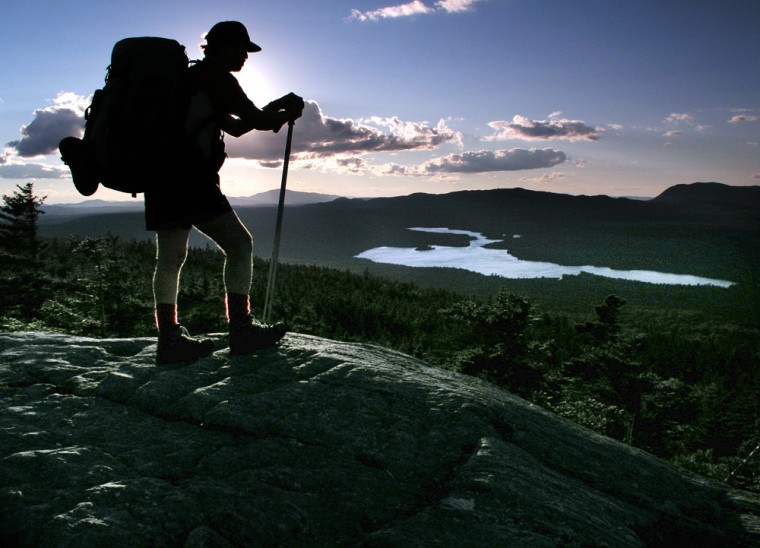In March of 1997, hiker Bill Maddrell set off on a solo trip down the Appalachian National Scenic Trail, a well-worn ribbon that slices through 14 states, eight national forests, and six national parks from Maine to Georgia. Determined to walk the entire 2,176 miles, he took a 60-pound backpack, but his relatives thought that wasn’t enough. “They asked me if I was going to carry a gun,” he said.
There was no reason for concern. Along the way, Maddrell met some of the 10,000 people who have walked the entire length. “You start hiking at the same pace and hang out at night,” he said. “It’s a rolling party. And the hike is an unforgettable experience.”
October 2nd is an important day for all lovers of the Appalachian Trail: It’s the 40th anniversary of the National Trails System Act of 1968, passed by Congress to promote preservation, standards, and public access on protected land.
The trail was first routed in 1937, but this recognition made certain that it wouldn’t disappear. The act also established the Pacific Crest National Scenic Trail, which runs 2,650 miles from Canada to Mexico. Today, 26 trails—the Appalachian, the Pacific Crest, and six other scenic trails as well as 18 national historic trails—make up the National Park Service’s National Trail System.
But the A.T. (as the trail is known) is one of the most popular, both for day hikers (an estimated three to four million people spend at least a day on the trail every year) and those like Maddrell who journey from end to end. Usually, no one’s in any particular hurry. The record holder for fastest hike completed the trail in just 47 days, but Maddrell’s trip took six months. “We didn’t want it to end,” he said.
In the A.T.’s early years, just a handful of people took advantage of it (by 1969, only 61 people had hiked every mile). “The end of World War II was putting pressure on the trail,” said Brian King, spokesman for The Appalachian Trail Conservancy. “New roads were being built, and second homes, so the trail was running through private property.” But in the 1960s people took notice; it took volunteers nearly four years of working with local landowners, buying their property or finding ways around it, to ensure that the public would always have access to a continuous trail. “This was easily the most complex public land acquisition land process ever,” said King.
Today just a small percent of the trail is privately owned. “It was so vulnerable,” said Steve Elkinton, program leader for the National Trails System. “The last 40 years enabled the federal government to come in and buy or move the trail, and now it is almost all protected.”
It’s also easier than ever to plan a multi-day hike. When Earl Shaffer—the first person to walk the entire length in the same trip—spent 124 days on the trail in 1948, he had no stove or tent. These days there are shelters every 10 miles or so, as well as nearby hotels and restaurants, for those who want a shower or a sit-down meal.
But even if hikers never veer from the trail, there’s no need to survive on GORP (hiker slang for Good Old Raisins and Peanuts). On his hike, Maddrell brought an Outback Oven—a lightweight covered skillet—and surprised his shelter-mates by baking a cake complete with store-bought icing.
The real surprise for many hikers, though, is just how beautiful the Appalachian Trail is—and how much the hike changes them.
Suzanne O’Keeffe used to hike parts of the Appalachian Trail in New York State when she lived nearby (she now lives out west and hikes parts of the Pacific Crest Trail). She had experiences both good (watching the rare sight of a black bear climbing a tree) and bad (fighting off mosquito attacks in 97-degree heat).
But hiking the trail, said O’Keeffe, “made me physically and mentally stronger, and reminded me that the life we live everyday is not the only life out there.”
